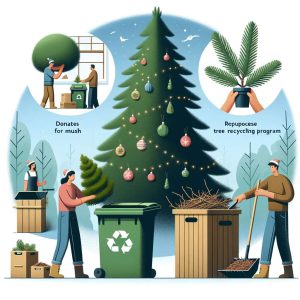The United States, known for its breathtaking landscapes and diverse ecosystems, boasts an incredible wealth of natural beauty and wildlife. From the towering peaks of the Rockies to the sweeping plains of the Midwest, the nation’s biodiversity is a testament to its varied landscapes. However, beneath this stunning tapestry lies a complex challenge: the conservation of these habitats and the species they support. While public lands and protected areas garner much attention, the role of private lands in wildlife habitat conservation is often overlooked.
Two-thirds of the land in the lower 48 states is privately owned, a statistic that underscores the immense influence private landowners have on the conservation of wildlife habitats. These private lands are not just spaces for agricultural production or suburban development; they are the stage upon which the delicate dance of life unfolds. Here, we will explore the significance of these lands, the critical need to engage private landowners in conservation efforts, and how they can access support to enhance wildlife habitats on their property.
The Importance of Private Lands in Wildlife Habitat Conservation
Biodiversity Hotspots on Private Lands
Private lands encompass a remarkable array of ecosystems that serve as biodiversity hotspots. These areas are vital for numerous species, some of which are threatened or endangered. From the hardwood forests of the Appalachians to the sprawling ranches of the American West, private lands provide essential habitat for countless wildlife species.
For example, grasslands found on private ranches support iconic species like the American bison and pronghorn antelope. Forested landscapes on private lands are home to numerous bird species, including the endangered red-cockaded woodpecker. In addition, private lands often contain unique microhabitats and ecosystems that support rare and specialized species, highlighting their irreplaceable role in biodiversity conservation.
Habitat Connectivity
One of the most significant challenges in wildlife conservation is ensuring habitat connectivity. Animals need to move and migrate to find food, mates, and suitable nesting sites. Private lands can act as crucial corridors that link larger protected areas, enabling wildlife to traverse the landscape safely.
For instance, consider the Florida panther, a critically endangered subspecies of cougar. Its survival depends on private lands serving as a pathway between protected habitats in southern Florida. The presence of private lands as functional wildlife corridors is an example of their indispensable role in maintaining biodiversity and preventing isolated populations from declining further.
Adaptive Conservation Strategies
Private lands offer a unique advantage in wildlife habitat conservation: flexibility. Private landowners can adapt conservation strategies to suit their specific circumstances and priorities. This adaptability allows for innovative approaches to habitat restoration and management that may not be feasible on public lands subject to more bureaucratic constraints.
The willingness of private landowners to invest in conservation can lead to the creation of wildlife-friendly practices and initiatives. Examples include the establishment of conservation easements, wetland restoration projects, and the adoption of sustainable agricultural practices that benefit both the landowner and wildlife. These creative solutions demonstrate the vital role private lands play in conservation efforts.
Engaging Private Landowners in Conservation
While private lands offer immense potential for wildlife habitat conservation, they also present unique challenges. Engaging private landowners in conservation efforts requires a delicate balance of incentives, education, and collaboration. Here are several strategies to effectively involve private landowners in the conservation process:
Financial Incentives
Financial incentives are often a compelling motivator for private landowners to engage in conservation activities. Programs such as the Conservation Reserve Program (CRP) and the Environmental Quality Incentives Program (EQIP) provide financial assistance to landowners who implement conservation practices on their property.
These programs not only benefit wildlife but also help landowners improve the productivity and sustainability of their operations. Offering incentives that align the landowner’s economic interests with conservation goals is a powerful strategy to promote habitat preservation.
Conservation Easements
Conservation easements are legal agreements that restrict certain types of development or land use on a property to protect its conservation value. By voluntarily entering into conservation easements, landowners can ensure that their land remains a haven for wildlife even as ownership changes hands.
These agreements are often negotiated with land trusts or government agencies, providing financial compensation to the landowner in exchange for the development restrictions. Conservation easements are a long-term commitment to conservation and offer a practical solution for landowners who want to protect their property’s ecological significance.
Education and Outreach
Effective conservation efforts must include education and outreach initiatives aimed at private landowners. Providing them with information about the ecological importance of their land and the benefits of conservation practices can be highly influential.
Educational programs can also help landowners understand the financial advantages of sustainable land management. Workshops, webinars, and resources on habitat enhancement techniques can empower landowners to take action for wildlife conservation.
Collaborative Partnerships
Collaboration between private landowners, conservation organizations, and government agencies is key to successful wildlife habitat conservation on private lands. Partnerships can pool resources, share expertise, and collectively work toward common conservation goals.
Collaborative initiatives often involve the development of landscape-scale conservation plans that identify priority areas for habitat protection and restoration. By working together, stakeholders can achieve more significant and lasting conservation outcomes.
Accessing Assistance for Habitat Enhancement
Enhancing wildlife habitats on private lands often requires technical expertise, financial support, and access to resources. Fortunately, there are various avenues through which private landowners can obtain assistance for habitat enhancement projects:
Government Programs
Government agencies at the federal, state, and local levels offer a range of programs to support wildlife habitat conservation on private lands. These programs provide technical assistance, funding, and guidance on conservation practices.
One of the most well-known federal programs is the Natural Resources Conservation Service (NRCS), which offers financial incentives and technical assistance through programs like EQIP and the Conservation Stewardship Program (CSP). State wildlife agencies and local conservation districts also provide resources and support tailored to specific regions and ecosystems.
Nonprofit Organizations and Land Trusts
Numerous nonprofit organizations and land trusts specialize in private land conservation. These entities often have extensive experience in working with landowners to protect and restore critical habitats. Examples include The Nature Conservancy, Ducks Unlimited, and the National Wild Turkey Federation.
Nonprofits and land trusts may offer financial assistance, expertise, and conservation planning services to private landowners. They can help landowners navigate the complexities of conservation easements and connect them with additional resources.
Technical Assistance
Private landowners can access technical assistance from a variety of sources. Conservation professionals, wildlife biologists, and foresters can provide expertise in habitat enhancement techniques, wildlife management, and sustainable land use practices.
Local universities, agricultural extension offices, and conservation organizations may offer workshops, training, and on-site consultations to help landowners implement effective conservation strategies. Technical assistance is invaluable in ensuring that habitat enhancement projects align with both ecological goals and the landowner’s objectives.
Grant Opportunities
Grant opportunities for private landowners interested in wildlife habitat conservation are available through various channels. Government agencies, foundations, and nonprofit organizations often offer grants to fund specific conservation projects.
These grants may support initiatives such as reforestation, wetland restoration, pollinator habitat establishment, and invasive species control. Landowners can explore grant options that align with their conservation goals and project proposals.
Success Stories in Private Lands Conservation
Highlighting successful examples of private lands conservation can inspire other landowners to get involved. Here are two notable success stories that showcase the positive impact of private land conservation efforts:
The Quivira National Wildlife Refuge, Kansas
The Quivira National Wildlife Refuge in central Kansas serves as a remarkable testament to the power of collaboration between private landowners, government agencies, and conservation organizations. This vital wetland habitat is a critical stopover point for migrating waterfowl and shorebirds along the Central Flyway.
The refuge was established in the 1950s, and its growth and success have been shaped by partnerships with local farmers and ranchers. Many private landowners in the area have voluntarily enrolled their lands in conservation easements, ensuring the preservation of vital wetland and prairie habitats.
Today, Quivira National Wildlife Refuge not only provides essential habitat for wildlife but also offers educational opportunities for visitors and serves as a model for successful private-public conservation partnerships.
The Longleaf Pine Ecosystem, Southeastern United States
The longleaf pine ecosystem, once spanning millions of acres across the southeastern United States, was drastically reduced due to logging, urban development, and agriculture. Private landowners, along with government agencies and conservation organizations, have embarked on a significant restoration effort to bring this unique ecosystem back to life.
The Longleaf Pine Partnership, a collaboration between public and private entities, has played a pivotal role in this endeavor. Private landowners who have dedicated their properties to longleaf pine restoration have received financial incentives, technical support, and expert guidance.
As a result, the longleaf pine ecosystem is making a remarkable comeback, with benefits extending beyond habitat restoration. Landowners are witnessing improvements in their properties’ resilience to wildfires and hurricanes, as well as increased recreational and aesthetic value.
Conclusion
The role of private lands in wildlife habitat conservation is undeniably pivotal. These lands, comprising two-thirds of the lower 48 states, provide critical habitat for a vast array of species, support habitat connectivity, and offer flexibility in conservation strategies. Engaging private landowners in conservation efforts is essential, and a range of incentives, education, and collaborative partnerships can facilitate their involvement.
Accessing assistance for habitat enhancement on private lands is also achievable through government programs, nonprofit organizations, technical assistance, and grant opportunities. Success stories like the Quivira National Wildlife Refuge in Kansas and the restoration of the longleaf pine ecosystem in the Southeastern United States serve as inspiring examples of what can be accomplished when private landowners, conservationists, and governmental agencies come together.
In our quest to conserve and protect the nation’s wildlife and natural habitats, we must recognize the vital role of private lands and work tirelessly to ensure their continued contribution to the preservation of our shared natural heritage. Engaging private landowners and providing them with the necessary tools and incentives will be key to the success of these critical conservation efforts.










